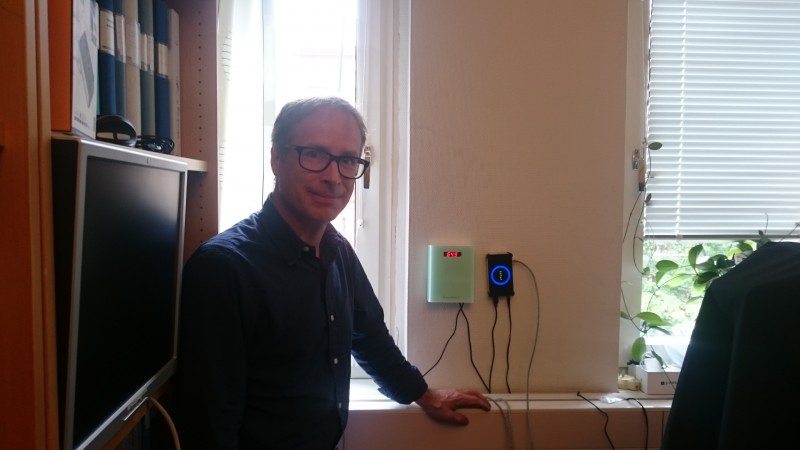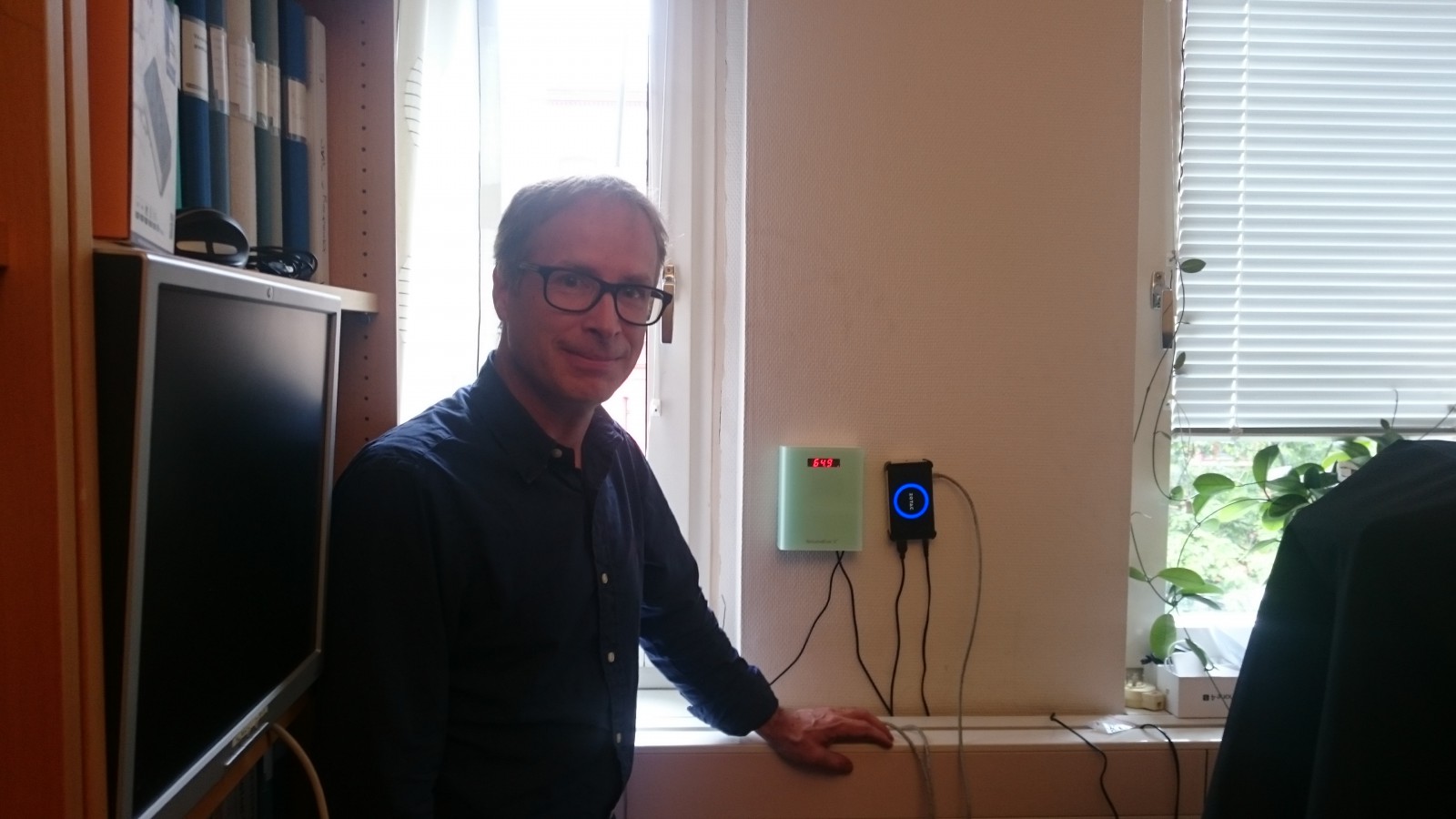No products in the cart.
Case story, External noise, Industry case, Noise and health, Noise measurement, Noise reduction, Noise regulation
How to reduce noise levels in cities
Are you one of the nearly 70 million Europeans who are exposed to noise levels above 55 dB on a daily basis? Due to a wide range of health issues related to high noise levels, the European Commission requires that member states map the noise levels in cities and large towns.
But how do we reduce noise levels in cities, and how is noise exposure a health risk? Find out how the Swedish municipality of Malmö has tackled the issue of noise in their city.

Noise affects your health
Studies have shown that noise affects the physical and mental wellbeing of people. Stress, negative sleep patterns, concentration difficulties and even difficulties acquiring knowledge are some of the negative effects of noise. Noise is also known to cause permanent hearing loss and high blood pressure as well as to have cardio vascular effects.
Particularly children are in the risk of suffering from difficulties with acquiring knowledge, concentrating and having a good night’s sleep which is important for their development.
Learn more about the health effects of noise exposure from these articles:
Auditory and non-auditory effects of noise on health
Health effects caused by noise: Evidence in the literature from the past 25 years
Requirements from the EU
The European Commission requires that Member States document noise maps and noise management action plans every 5 years for:
- Agglomerations with more than 100,000 inhabitants
- Major roads (more than 3 million vehicles a year)
- Major railways (more than 30,000 trains a year)
- Major airports (more than 50,000 movements a year, including small aircrafts and helicopters)
Source: European Commission
It may seem a big issue to tackle, figuring out how to reduce noise in the city, and so SoundEar recently met with Environmental Engineer, Mårten Spanne, from the Environment Department in Malmö to learn more about their noise reduction programme, and what they do to reduce noise in Malmö.
Start by measuring noise levels and creating awareness
Malmö, located in southern Sweden, is working on reducing the negative effects of noise on their citizens through an elaborate noise reduction programme. The first step towards reducing noise in the city is to create an awareness of current noise levels. In Malmö, they do that by measuring noise levels in the city with outdoor microphones and a noise measurement system from SoundEar.
The focus in Malmö is on creating a better sound atmosphere and thereby creating a more attractive and liveable city with inhabitants who are less likely to suffer from health issues related to exposure to high noise levels.
For a full read (in Swedish) on the noise reduction programme in Malmö, visit the city’s website or download the program in pdf.
How and where to measure noise?
In order to measure current noise levels in Malmö, the municipality has installed two SoundEar noise measuring devices in the city, helping the municipality detect where the biggest noise related issues are and scaling the issues to map the entire city.
Currently, Malmö is primarily measuring noise in these locations:
- Bergsgatan: measuring noise in a busy street
- Mobile monitoring station: currently measuring noise at Nobelvägen (a busy road in the northern parts of the city)
Malmö also has a portable measuring station – located in a trailer – which allows them to measure noise for a shorter period of time in any given location of the city. Among other places, it has been measuring noise at the harbour, determining noise pollution levels from cargo ships and cruise ships, which dominate the soundscape in the harbour.

(Measuring station in Malmö, Dalaplan)
From the monitoring station at Dalaplan, the municipality gathers information on a daily basis about the pollution in Malmö, from carbon dioxide levels to ozone and noise pollution among other things. The noise levels are measured using a SoundEar 3-320 device with an outdoor microphone.
“We had not been measuring noise for a long time in Malmö. The last environmental noise measurement campaign was done in the early seventies. During the implementation of the noise reduction programme, we decided that we needed to measure noise in the streets to show the benefits of actions to reduce the sources of noise”, says Mårten Spanne. The point being, that it is necessary to take measurements closer to the source of the noise – in this case, the busy streets of Malmö.
Environmental and noise reduction initiatives
Besides from measuring noise levels around the city, Mårten Spanne points out some of the initiatives to reducing noise levels the municipality has realized so far. One of them being to lower the speed limit in the inner parts of the city to 40 km/hour – not only providing a quieter atmosphere, but also reducing pollution and traffic accidents. Another important initiative has been to require that all public busses in the city are electrically powered – making not only much less noise than other busses, but also omitting less pollution into the city air.
According to Mårten Spanne, the next steps are also going to be very interesting, focusing more on the softer sides of providing a good atmosphere for Malmö citizens. Next up is creating quiet areas and zones in parks, squares and other recreational areas around the city. This will provide refuge from the busy city life and a place for both ears and minds to relax in Malmö.

(Environmental Engineer from Malmö municipality, Mårten Spanne, with a SoundEar 3-320 noise measurement device)
Focus on areas with a lot of people
In Malmö, they have decided to measure noise in areas known to generally have high noise levels and in areas where noise is going to affect the most people. The areas receiving special noise attention in Malmö are:
- Residential areas
- Pre- and primary schools
- Parks and recreational areas
- Busy streets and intersections
The focus in Malmö on reducing noise is closely linked to the wellbeing of their citizens. It may be difficult to quantify the results of the noise reduction programme. But the municipality expects that it will lead to an increase in the health of their citizens, i.e. better sleep, less stress and a lower risk of high blood pressure.
But how – besides measuring the noise – do they plan to reduce noise levels?
The steps to reduce noise in Malmö
The long term goal of the noise reduction programme in Malmö is to reach the following noise levels:
- A maximum indoor noise level at night of 30 dBA
- A maximum outdoor noise level at night of 55 dBA and
For an idea of what these noise levels actually mean, take a look at this pdf showing noise levels for different situations.
Some of the initiatives the municipality of Malmö has taken and will take to reach these levels are:
- Traffic regulation – reducing the speed limit to 40 km/hour in the city centre
- Using only electrically powered busses in public transport
- Installing noise barriers in public spaces
- Paving roads with noise dampening asphalt
- Window insulation – subsidise homeowners who insulate their windows against noise.
- Creating quiet areas in parks and other recreational areas
Adapting to the needs of Malmö
The municipality of Malmö logs all measurements and collects them manually via USB for research purposes. But they also have a webpage for public display of noise levels, and for this purpose they only need the hourly noise averages along with the max noise levels, as they are easier to read. This specific need has resulted in the development of a small additional piece of software for the SoundEar 3 noise measuring system that only draws out the measurement types:
- ‘LAeq, 60 min.’ (the average noise level, measured over 60 minutes) and
- ‘LAF max’ (the highest A-weighted noise level measured within a second, as a fast measurement).
With the new software, the city of Malmö is ensured a stable and reliable logging of the data they need for public display directly on their webpage.
What does all of this mean?
So, to sum it all up, there are a number of risks related to exposure to high noise levels, such as stress, high blood pressure and concentration difficulties. The European Commission has decided that European countries need to make plans for reducing noise levels in their cities.
One such plan for reducing noise levels comes from the Swedish municipality, Malmö, and their main focus is on reducing noise levels where people primarily tend to stay. That is in residential areas, near schools and in public parks and squares around the city.
Some of the steps to reducing noise in Malmö are to create quiet zones in recreational areas around the city and to help citizens insulate their windows against noise. When it comes to traffic noise, Malmö is using a number of different initiatives, including noise absorbing asphalt, electrically powered busses and traffic regulation.
You might be curious as to what your city is doing to reduce noise levels near you. Check their website or give them a call to see what the plans are. Maybe they even have suggestions for you on things, you can do in your house, apartment or neighbourhood to reduce noise.
Want to tip someone else on this read?

 Deutsch
Deutsch Dansk
Dansk Svenska
Svenska

Hi Troy,
That is one of the advantages when you visualize the noise. You create awareness and nudge people into using a hearing protection. If you are interested in learning more about our products just let us know.
Best regards,
Martin
SoundEar A/S